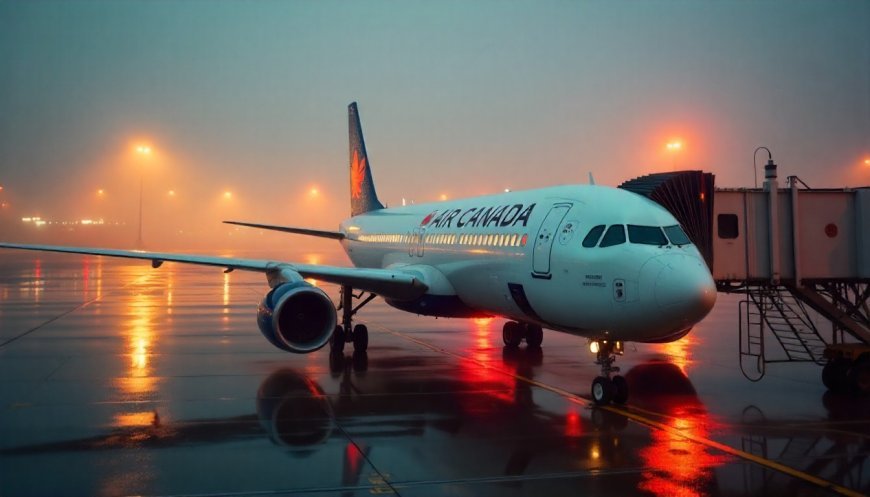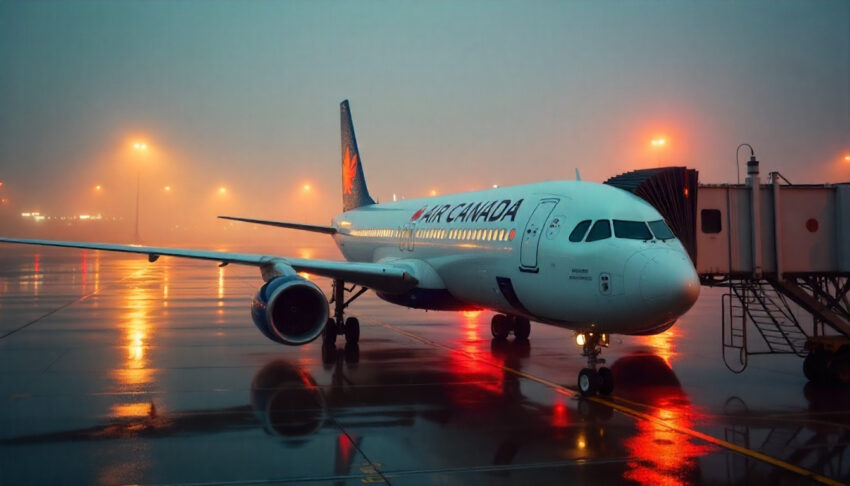Air Canada Achieves Strong Mid-Year Performance as Potential Flight Attendant Strike Clouds Future Growth, Threatening Travel Plans


For the first half of 2025, Air Canada’s updates of operating revenues highlight a 2% increase, reaching $5.632 billion alongside a notable performance in cargo and vacations. While this growth is strong, it is hampered with the CUPE flight attendant strike that is looming, with a strike vote in process. If the strike goes ahead, it has the potential to halt the growth prospects Air Canada has in place while also impacting travel plans. The strike, should it go ahead, has the potential to create quite the mess risking thousands of flights, implementation of travel plans with the capability of major disruptions. Although the airline is maintaining it’s strategy, the strike vote outcome is causing heavy impact on operations and shifts in growth dahil.
Impressive Financial Performance in Mid-Year 2025
Air Canada has posted solid financial results for the first half of 2025, signaling the airline’s ability to weather macroeconomic uncertainties. For the second quarter, Air Canada reported operating revenues of $5.632 billion, marking a 2% increase compared to the previous year. Operating income was $418 million, yielding an operating margin of 7.4%. Adjusted EBITDA came in at $909 million, reflecting a margin of 16.1%. This steady growth in revenue and income showcases the strength of Air Canada’s operations, which have managed to overcome external challenges.
Along with the revenue boost, Air Canada achieved premium revenue growth of 5% from the second quarter of 2024, underlining its success in capitalizing on high-demand markets. Notably, Air Canada Cargo, Air Canada Vacations, and Aeroplan, all pillars of the airline’s diversified business model, helped strengthen the financial results. Cash flow from operating activities was $895 million, and free cash flow stood at $183 million.
Threat of Flight Attendant Strike Looms Large
Despite these positive financial outcomes, Air Canada faces growing uncertainty due to a potential flight attendant strike. On July 25, 2025, the Canadian Union of Public Employees (CUPE), which represents 10,000 flight attendants across Air Canada’s mainline and Rouge fleets, called for a strike vote after the conciliation process ended without an agreement.
Flight attendants have been working under a 10-year collective agreement, which the union claims has resulted in significant loss of purchasing power for its members. The union is negotiating for higher wages and an end to the abuse of unpaid work. Flight attendants are required to perform several hours of unpaid mandatory duties, such as safety checks, boarding, deplaning, and assisting passengers with special needs, both before and after flights.
The union began its strike vote on July 28, with results expected by August 1, 2025. If the vote passes, the union could issue a 72-hour strike notice as early as August 16, 2025, putting Air Canada’s operations at risk. The airline averages 500 domestic flights, 430 flights to the U.S., and more than 170 international flights daily, meaning a strike would significantly disrupt travel plans for both domestic and international passengers.
Operational Excellence Amidst Uncertainty
Even as the flight attendant strike vote casts a shadow over Air Canada’s future, the airline’s operations remain impressive. Air Canada led all major North American carriers in on-time performance for both May and June 2025, reinforcing its commitment to customer service. The airline’s operational efficiency and ability to maintain punctuality are key to its competitive edge, especially as it continues to grow its network.
Air Canada also experienced strong performance from its ancillary services. Air Canada Cargo, Aeroplan, and Air Canada Vacations contributed significantly to the airline’s positive financials, compensating for any external uncertainties. Despite a slight dip in passenger load factor (down 0.8% compared to Q2 2024), the airline’s premium offerings and strong network connections continue to draw customer interest.
Financial Strategy and Investments in the Future
Air Canada’s management has made notable strides in managing capital, exemplified by the $500 million substantial issuer bid completed in the second quarter. The bid led to the purchase and cancellation of 26.6 million shares, which is part of the airline’s strategy to return value to shareholders. Additionally, Air Canada fully repaid its convertible notes in cash upon maturity in July, further strengthening its financial position.
Despite the potential strike and the economic uncertainties tied to it, Air Canada is reaffirming its financial guidance for 2025. The airline expects adjusted EBITDA for the year to range between $3.2 billion to $3.6 billion and projects ASM capacity growth between 1% and 3%. This forecast signals confidence in its ability to navigate both internal and external challenges.
Future Growth Under Pressure
As Air Canada looks to expand in the coming years, the threat of a flight attendant strike could hinder its long-term growth trajectory. The airline has ambitious goals for the future, with projections to achieve approximately $30 billion in operating revenues by 2028 and a free cash flow margin of approximately 5%. However, these goals are now clouded by the uncertainty surrounding labor relations.
A prolonged strike would not only disrupt daily operations but also have a significant impact on future network expansion, capacity planning, and customer service. As the union prepares to cast its final votes, Air Canada’s leadership is closely monitoring the situation and preparing contingency plans.
Air Canada’s Strategic Priorities Moving Forward
Despite the looming strike threat, Air Canada is determined to stick to its long-term strategic priorities. These include:
- Increasing revenues through both passenger services and ancillary businesses like Aeroplan and Air Canada Cargo.
- Growing fleet and network capacity, particularly focusing on high-demand international markets.
- Investing in new fleet additions to continue expanding its footprint in both North America and abroad.
The airline’s ability to achieve its 2028 financial targets will depend heavily on successful execution of its strategic initiatives, which, unfortunately, could be jeopardized by any potential labor disruptions.
Air Canada 2024 Pilot Strike Threatened Growth and Strained Q4 Performance
In September 2024, Air Canada faced the threat of a major pilots’ strike after negotiations with the Air Line Pilots Association (ALPA) over salary parity and improved working conditions. The strike could have disrupted 110,000 daily passengers and halted crucial cargo operations, potentially leading to billions in losses and negatively impacting Canada’s economy. The threat of a strike clouded Air Canada’s growth, but a last-minute agreement on September 15, 2024, avoided the disruption, providing a 46% wage increase over four years, valued at C$1.9 billion.
Despite the strike being averted, the Q4 2024 financials were affected by a $490 million pension charge from the new pilot contract. Operating revenue for Q4 was $5.404 billion (up 4% YoY), but the airline reported an operating loss of $254 million, compared to a $79 million operating income in Q4 2023. The net loss was $644 million, a sharp decline from the $184 million net income in Q4 2023. While the strike threat and resulting costs impacted the quarter’s performance, Air Canada ended the year with record revenues of $22.255 billion and 47 million passengers transported, showcasing resilience despite labor-related challenges.
Air Canada has posted strong mid-year results, with a 2% increase in operating revenues, but the potential flight attendant strike, involving 10,000 workers, threatens its future growth. The strike could disrupt operations and lead to flight cancellations, affecting thousands of passengers and hindering the airline’s expansion plans.
Navigating the Uncertainty
While Air Canada’s mid-year performance in 2025 highlights its financial strength, the potential flight attendant strike casts significant uncertainty over its future. The airline has shown resilience in the face of operational challenges, but the risk of widespread disruptions is a pressing concern for both the company and its passengers. If the strike proceeds, Air Canada’s growth plans, expansion targets, and overall service commitments could face serious setbacks, making the upcoming weeks crucial for the airline as it works to resolve the labor dispute and maintain its momentum in the competitive airline industry.
The post Air Canada Achieves Strong Mid-Year Performance as Potential Flight Attendant Strike Clouds Future Growth, Threatening Travel Plans appeared first on Travel And Tour World.






